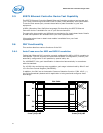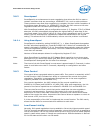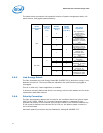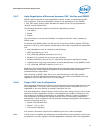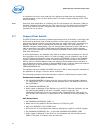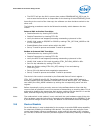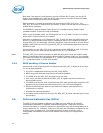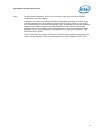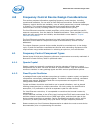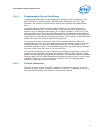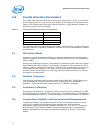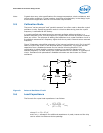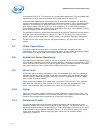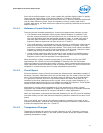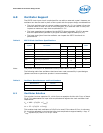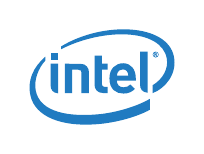
82575 Ethernet Controller Design Guide
30
4.0 Frequency Control Device Design Considerations
This section provides information regarding frequency control devices, including
crystals and oscillators, for use with all Intel Ethernet controllers. Several suitable
frequency control devices are available; none of which present any unusual challenges
in selection. The concepts documented herein are applicable to other data
communication circuits, including Platform LAN Connect devices (PHYs).
The Intel Ethernet controllers contain amplifiers, which when used with the specific
external components, form the basis for feedback oscillators. These oscillator circuits,
which are both economical and reliable, are described in more detail in “Crystal
Selection Parameters”.
The Intel Ethernet controllers also have bus clock input functionality, however a
discussion of this feature is beyond the scope of this document, and will not be
addressed.
The chosen frequency control device vendor should be consulted early in the design
cycle. Crystal and oscillator manufacturers familiar with networking equipment clock
requirements may provide assistance in selecting an optimum, low-cost solution.
4.1 Frequency Control Component Types
Several types of third-party frequency reference components are currently marketed. A
discussion of each follows, listed in preferred order.
4.1.1 Quartz Crystal
Quartz crystals are generally considered to be the mainstay of frequency control
components due to their low cost and ease of implementation. They are available from
numerous vendors in many package types and with various specification options.
4.1.2 Fixed Crystal Oscillator
A packaged fixed crystal oscillator comprises an inverter, a quartz crystal, and passive
components conveniently packaged together. The device renders a strong, consistent
square wave output. Oscillators used with microprocessors are supplied in many
configurations and tolerances.
Crystal oscillators should be restricted to use in special situations, such as shared
clocking among devices or multiple controllers. As clock routing can be difficult to
accomplish, it is preferable to provide a separate crystal for each device.
For Intel Ethernet controllers, it is acceptable to overdrive the internal inverter by
connecting a
25 MHz external oscillator to the XTAL1 lead, leaving the XTAL2 lead unconnected. The
oscillator should be specified to drive CMOS logic levels, and the clock trace to the
device should be as short as possible. Device specifications typically call for a 40%
(minimum) to 60% (maximum) duty cycle and a ±50 ppm frequency tolerance.
Note: Please contact your Intel Customer Representative to obtain the most current device
documentation prior to implementing this solution.



